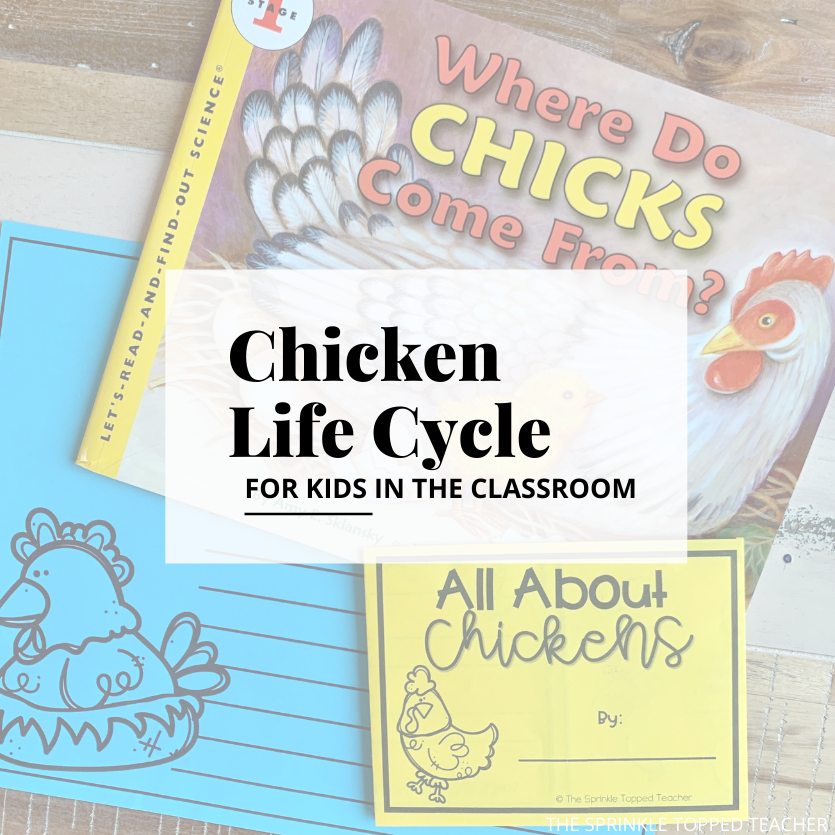
Chicken Life Cycle Printable Research Project
Which came first—the chicken or the egg? While we may not have cracked the answer to that popular question, we do know a little something about the life cycle of the average chicken. Your students, however, aren’t as familiar with the concept. That’s why I created this Life Cycle of a Chicken Printable Research Project to teach them all about it!
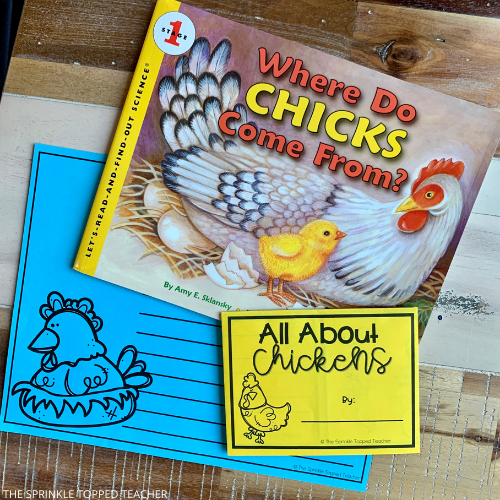
This low-prep Chicken Life Cycle Flip Flap will get your students extremely interested in learning about chickens. Your students will get hands-on experience by cutting, coloring, and writing about their chicken research! Your students will become masters of researching and writing, which are extremely useful skills as they get into the upper grades.
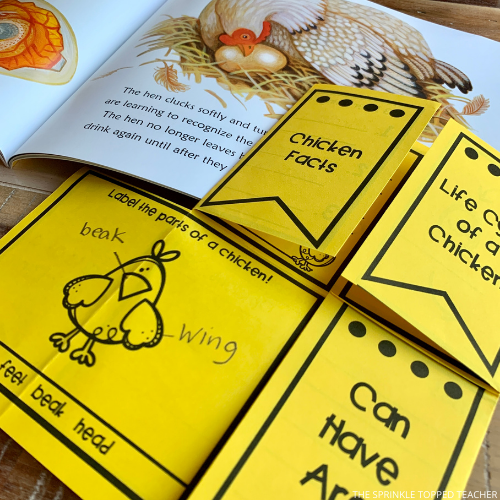
What You Get with the Chicken Life Cycle Research Project
This printable research project includes a fun chicken life cycle flip flap where your students will get to dive into their facts and opinions about chickens and the chicken life cycle. The flip flap also helps students practice skills such as “can, have, are”. The flip flap goes even more in-depth with exercises such as writing complete sentences and labeling the parts of the chicken life cycle. Lastly, this research project comes with a digital Google Slides life cycle option as well!
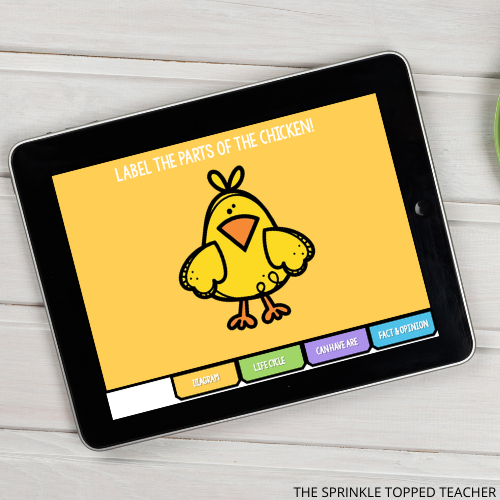
The great thing about the Google Slide activity is that it comes with premade boxes for your students to type in. You can also edit the directions on the slide so you can tailor the activity to fit your lesson. Lastly, the tabs are clickable, so you don’t have to exit out of present mode to click on the tabs!
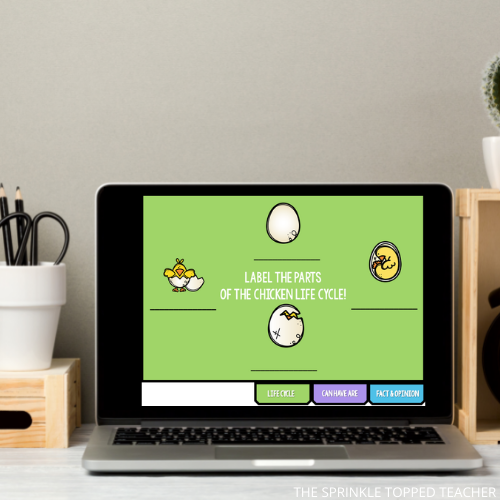
This is more than pages of worksheets. This is an educational activity that comes to life through fun facts, ways to identify their knowledge, research activities, and brief writing activities. This way, your student is engaging all of their learning capabilities and learning more than fun facts about the life cycle of chickens.
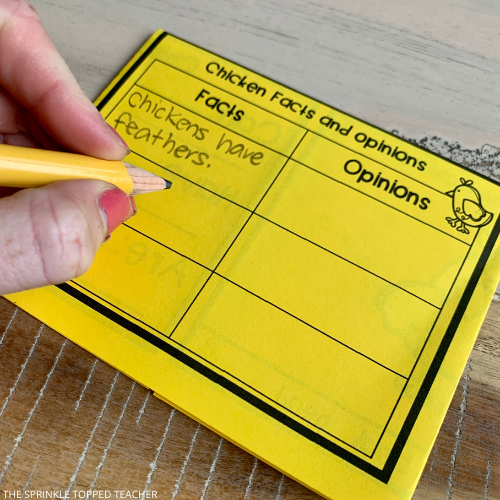
Through this chicken life cycle foldable, your student is engaging their critical thinking skills by being asked questions about what they’ve learned and having to apply that knowledge through writing. Writing also enhances their communication skills. This is a perfect way for teachers to briefly assess their students’ strengths and weaknesses in areas such as knowledge retention, creativity, resourcefulness, and research capabilities.
Beyond that, the more a student engages with the information presented, the more likely that student is going to retain the knowledge!
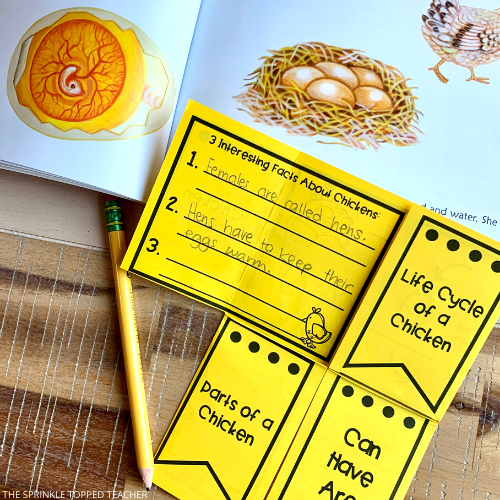
How to Fully Dive Into Learning About Chickens
Here are a handful of fun ideas that can take your research project to the next level. Engaging your students in learning about chickens will help them retain the knowledge.
- Watch a Youtube Video about the life cycle of chickens!
- Check out books from your local library about the life cycle of chickens!
- Set up a zoom call with a local farmer who can “bring a chicken in” for show and tell!
Most importantly—make it fun! All of these are ways to engage your students with knowledge about chickens and introduce them to the world of barnyard animals. You could even take a week and dedicate it to learning about barnyard animals and the different roles they have on farms.
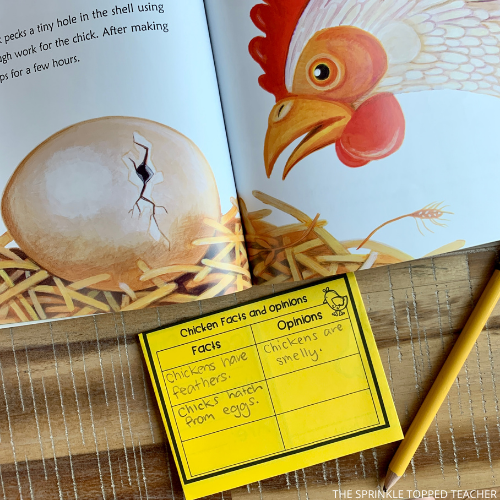
Conclusion
It may seem like this is an activity just about chickens, but honestly, it’s about a lot more than that. Any activity that is inspiring learning in young children is encouraging them to begin observing and learning about the world around them.
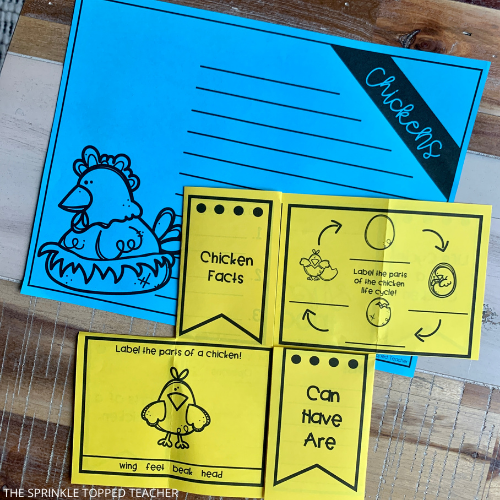
Grab a copy of the Chicken Life Cycle Activity for Kids HERE!
How are some ways you plan on using this Chicken Life Cycle Research Project? Let me know your ideas—get creative! I love hearing how my worksheets are being used to promote knowledge and teach children!